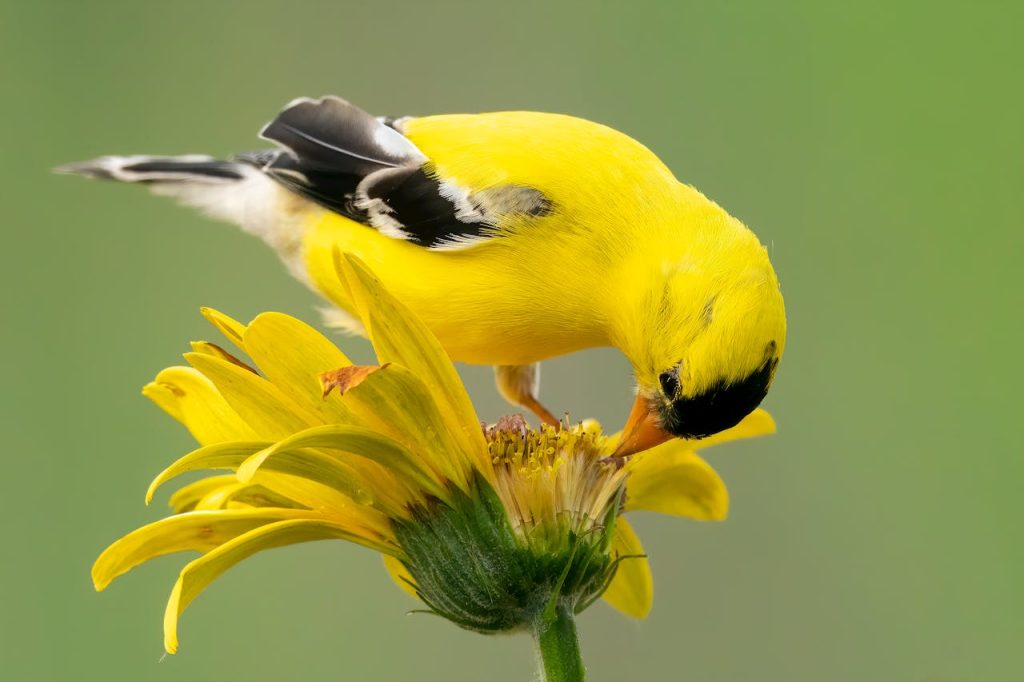
Sexing goldfinches, especially distinguishing between males and females, is crucial for bird enthusiasts and breeders alike. Understanding the methods and characteristics that define each sex can greatly enhance the care and breeding practices for these charming birds.
Identifying Adult Goldfinches
Differentiating between adult male and female goldfinches involves observing several physical characteristics and behaviors:
- DNA Testing: The most definitive method, DNA testing involves collecting samples such as feathers, blood, or eggshell fragments. This can be done year-round and provides accurate results on the bird’s sex.
- Behavioral Cues During Breeding Season: In late winter or early spring, goldfinches exhibit specific behaviors:
- Courtship Behavior: Males may feed females directly, a nurturing gesture during courtship.
- Nesting Preparation: Females actively collect nesting materials, preparing for egg-laying.
- Visual and Physical Characteristics:
- Song: Male goldfinches typically sing melodiously and intensely to attract females. Females may sing softly but lack the intensity and variety of males.
- Red Mask: Males have a larger and more intense red mask extending past their eyes, while females have a smaller and less intense mask.
- Beak Size and Shape: Males often have slightly longer and curved beaks compared to females.
- Feather Details: Pay attention to the feathers at the base of the beak (hairs), which are darker in males and lighter in females.
- Plumage and Color Markings:
- Crown and Shoulder: Males typically have a more intense black crown and distinct wing shoulder markings compared to females.
- Yellow Mark on Wing: This mark tends to be shorter and wider in males than in females.
- Tail Feathers: Females often have more pronounced white spots and a broader tail shape compared to males.
- Vent Examination: During peak breeding season, carefully examining the vent area can reveal differences in shape between males (elongated and prominent) and females (round and flat).
- Posture and Chest Color: Males tend to sit more upright, and their chests may display yellow feathers. Females often have a more subdued posture with no yellow on the chest.
Sexing Young Goldfinches
Sexing young goldfinches, known as gray-pates, is more challenging due to their less developed plumage. However, some indicators can provide clues:
- Shoulder Color: Check for any color differences, which may change after the first molt.
- Tail Marks: Note any markings or patterns on the tail feathers.
- Wing Yellow: Look for the presence and extent of yellow markings on the wings.
- Beak Characteristics: Even in young birds, differences in beak size and shape may hint at their sex.
Conclusion
While adult goldfinches present clearer indicators of their sex through visual cues and behaviors, DNA testing remains the only foolproof method. By understanding these methods and characteristics, bird enthusiasts and breeders can confidently manage their goldfinch populations and ensure optimal care and breeding success.
Mastering the art of sexing goldfinches enhances not only the breeding process but also deepens the appreciation for these delightful birds and their unique traits.
